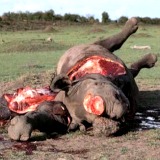Fascinating Baboon Facts: Behavior, Troops & Habits
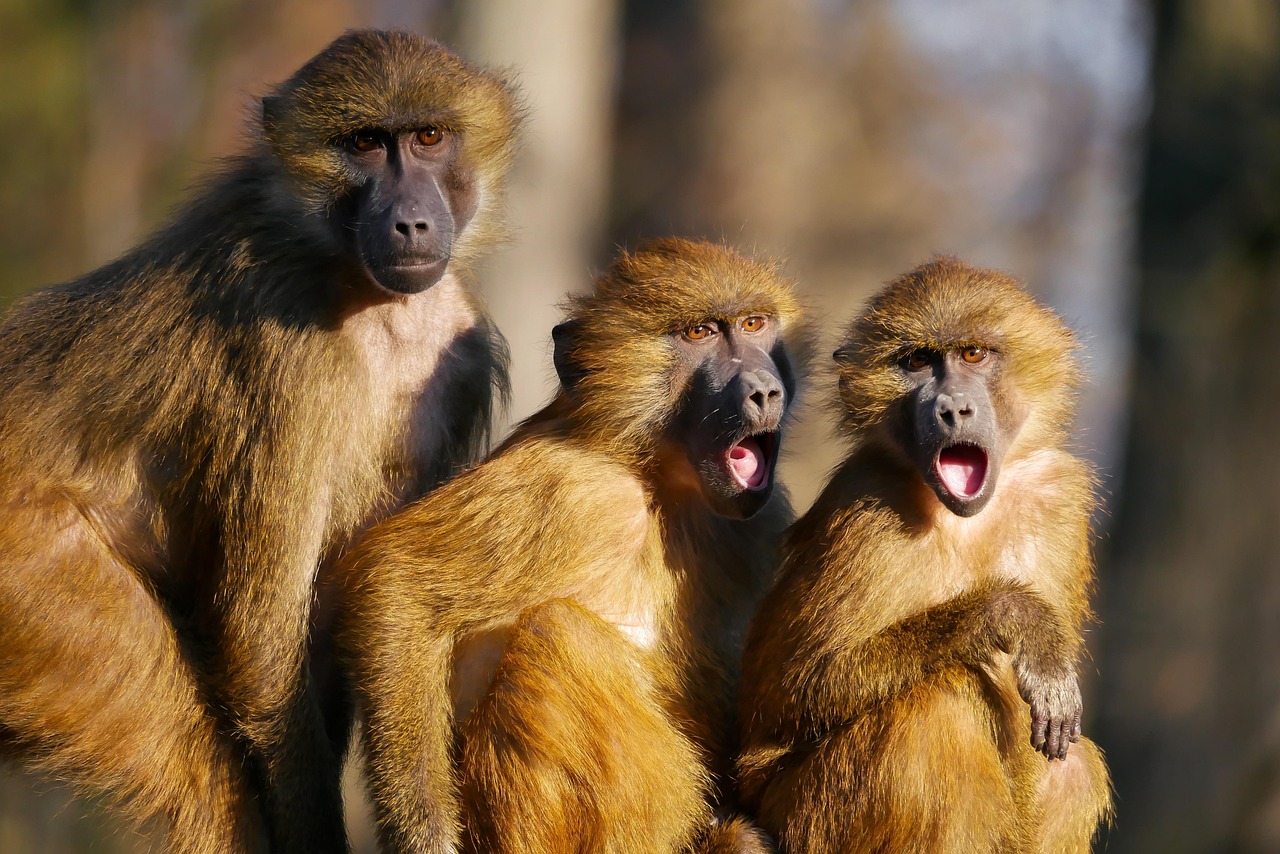
What Are Baboons? Physical Characteristics & Appearance
Baboons are large Old World monkeys characterized by their distinctive dog-like heads and robust builds.
These remarkable primates are characterized by robust shoulders, strong limbs, and distinctive facial features that distinguish them from other monkey species.
Key Physical Features:
Head structure: Close-set eyes beneath a prominent brow ridge
Facial features: Elongated muzzle and powerful jaws adapted for their varied diet
Coloration: Ranges from brownish-gray to dark brown or black
Sexual dimorphism: Adult males sport a distinctive dark mane covering the neck and shoulders
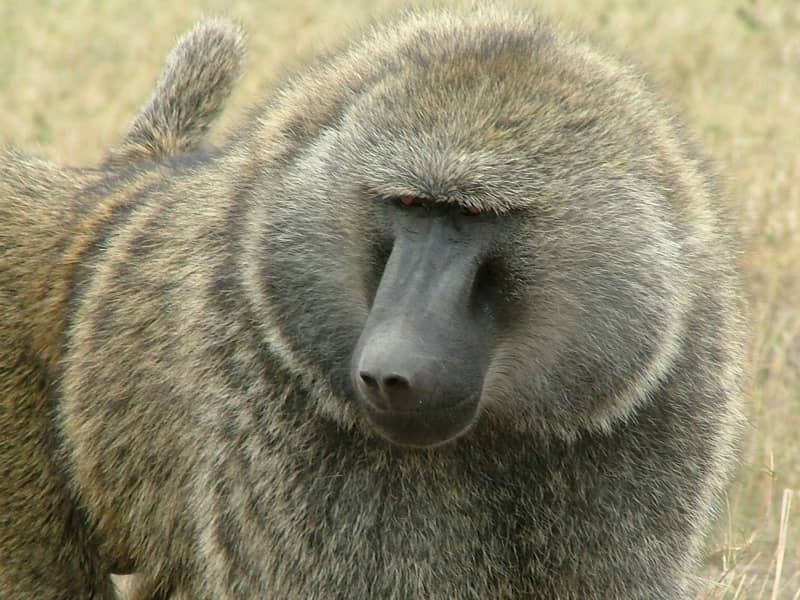 Adult males have a dark mane on the neck and shoulders.
Adult males have a dark mane on the neck and shoulders.Where Do Baboons Live? Habitat & Distribution
Baboons are highly adaptable primates found across African savannas and woodland areas.
Their habitat requirements include three essential elements: refuge sites (tall trees or cliffs), reliable water sources, and sufficient food resources.
Baboon Species and Their Habitats:
Chacma baboons—Southern African savannas
Olive baboons – East and Central African grasslands
Yellow baboons – Eastern African woodlands
Guinea baboons – West African savannas
These intelligent primates thrive in diverse environments where they can access both protection from predators and abundant food sources.
Baboon Diet: What Do Baboons Eat?
Baboons are opportunistic omnivores with a remarkably diverse diet that ensures their survival across a wide range of habitats.
Primary Food Sources:
- Fruits and seeds (staple foods)
- Insects and other invertebrates
- Small mammals (rabbits, hares, young antelopes)
- Birds and bird eggs
- Vervet monkeys (occasionally)
Young baboons learn foraging skills through observation, watching their mothers and troop members to identify safe, nutritious foods and effective hunting techniques. This social learning is crucial for their survival.
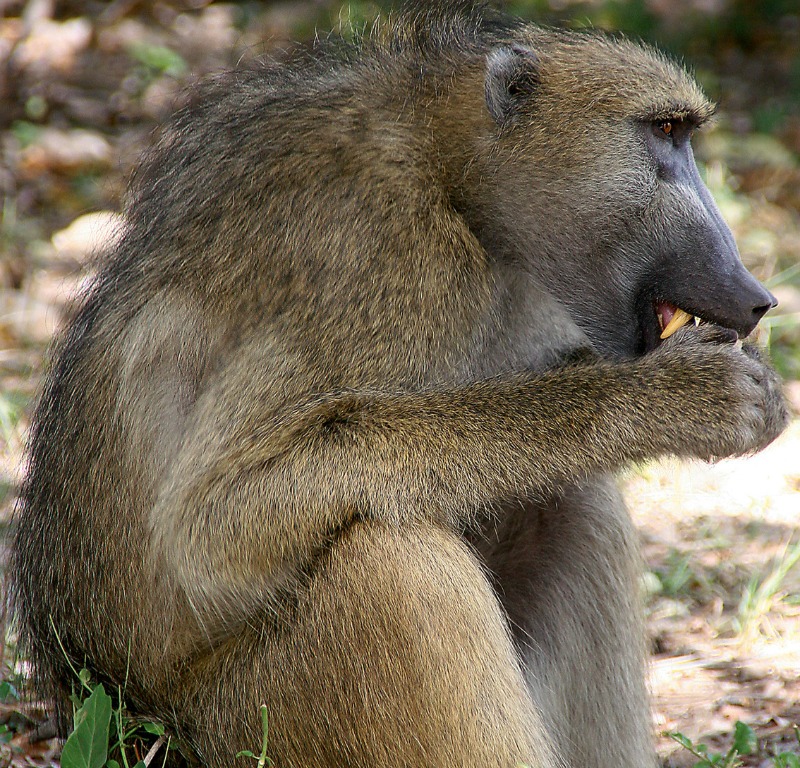 What do baboons eat?
What do baboons eat?Baboon Social Structure: Complex Troop Dynamics
Baboons display some of the most sophisticated social behaviors in the animal kingdom. Their troops operate under intricate dominance hierarchies that govern daily interactions and resource access.
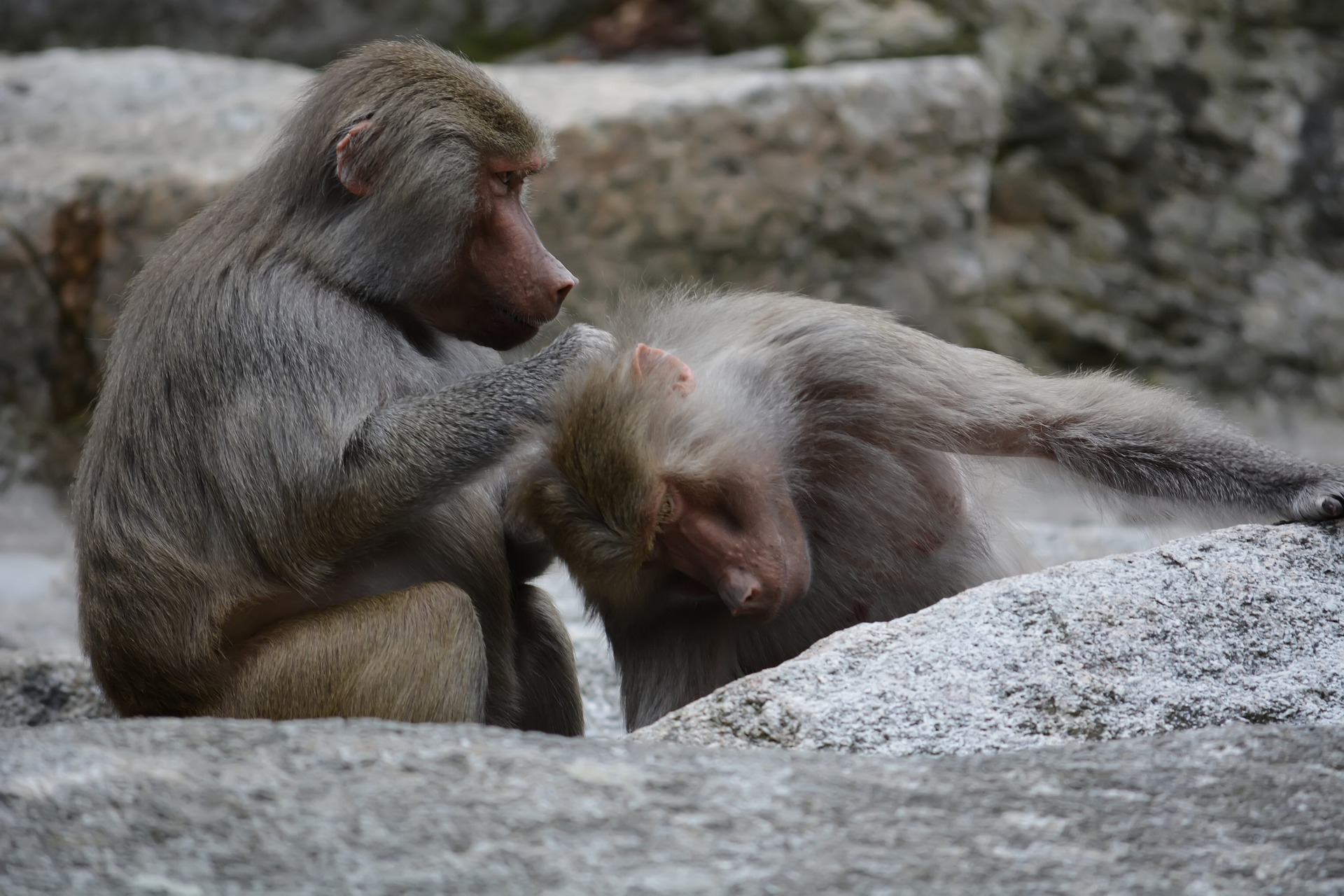
Male Dominance Hierarchy
How Male Rank Works:
- Physical condition determines dominance status
- High-ranking males secure priority access to feeding sites and mating opportunities
- Low-ranking males sometimes form coalitions to challenge dominant individuals
- Males frequently interact with infants through play and grooming, sometimes as a strategy to avoid aggressive confrontations
Female Social Hierarchy
Female baboon hierarchies are more fluid than male structures, influenced by:
- Reproductive status and cycle
- Mate selection and partnerships
- Presence of dependent offspring
- Inherited status from mothers (females remain in their birth troop)
Alliances, Cliques & Social Intelligence
Extended observation of baboon troops reveals complex social networks including:
- Strategic alliances between individuals
- Social cliques within larger groups
- Documented cases of deception and manipulation
- Coalitions formed to challenge higher-ranking members
Baboon Communication: Signals & Social Interactions
Baboons possess an extensive communication system combining vocalizations, facial expressions, and body language.
Facial Expressions & Their Meanings
|
Behavior Slight mouth opening with lips pulled back (grin) Lip smacking with narrowed eyes and ears back Mouth open, lips slightly drawn back (teeth concealed) Yawning with eyes closed Wide yawn with eyes open Forward thrust with raised eyebrows with branch shaking Rump presentation |
Meaning Submission Friendly mood Mild aggression Relaxation and contentment Tension or excitement Strong threat display Appeasement signal (both sexes) |
Vocalizations & Deceptive Behaviors
Baboons use barking sounds as alarm calls and aggressive signals toward rival troops. Their social intelligence extends to dishonest communication, including:
False distress calls by juveniles to manipulate adults into attacking food competitors
Fake alarm calls by subordinates to distract attacking individuals
This sophisticated use of deception demonstrates advanced cognitive abilities rarely seen in non-human primates.
Grooming: The Foundation of Baboon Society
Grooming serves multiple critical functions beyond parasite removal and hygiene:
Social Benefits of Grooming:
- Strengthens bonds between allies
- Reinforces social hierarchies
- Creates support networks for food disputes
- Builds coalitions for dominance conflicts and mating competition
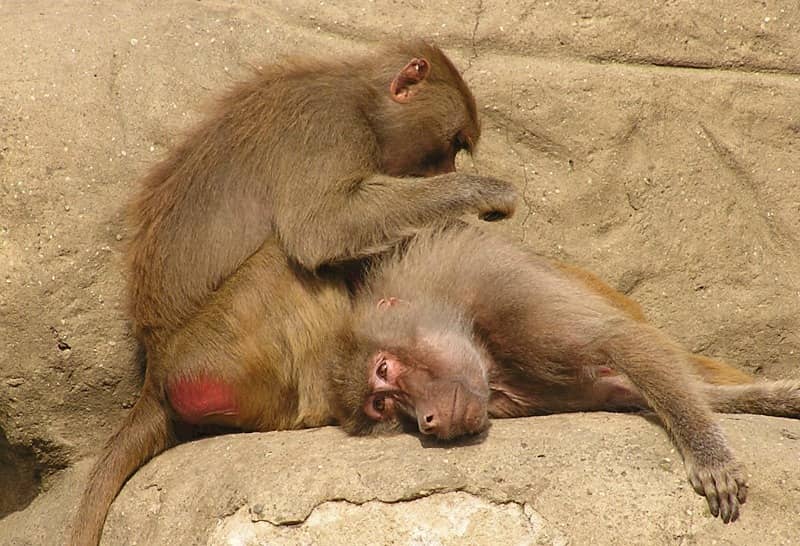 Grooming enhances overall troop cohesion
Grooming enhances overall troop cohesionGrooming represents one of the most important socializing behaviors in baboon society, directly impacting an individual's success and survival.
Baboon Territory & Home Range Behavior
Unlike territorial animals, baboons maintain home ranges without actively defending borders.
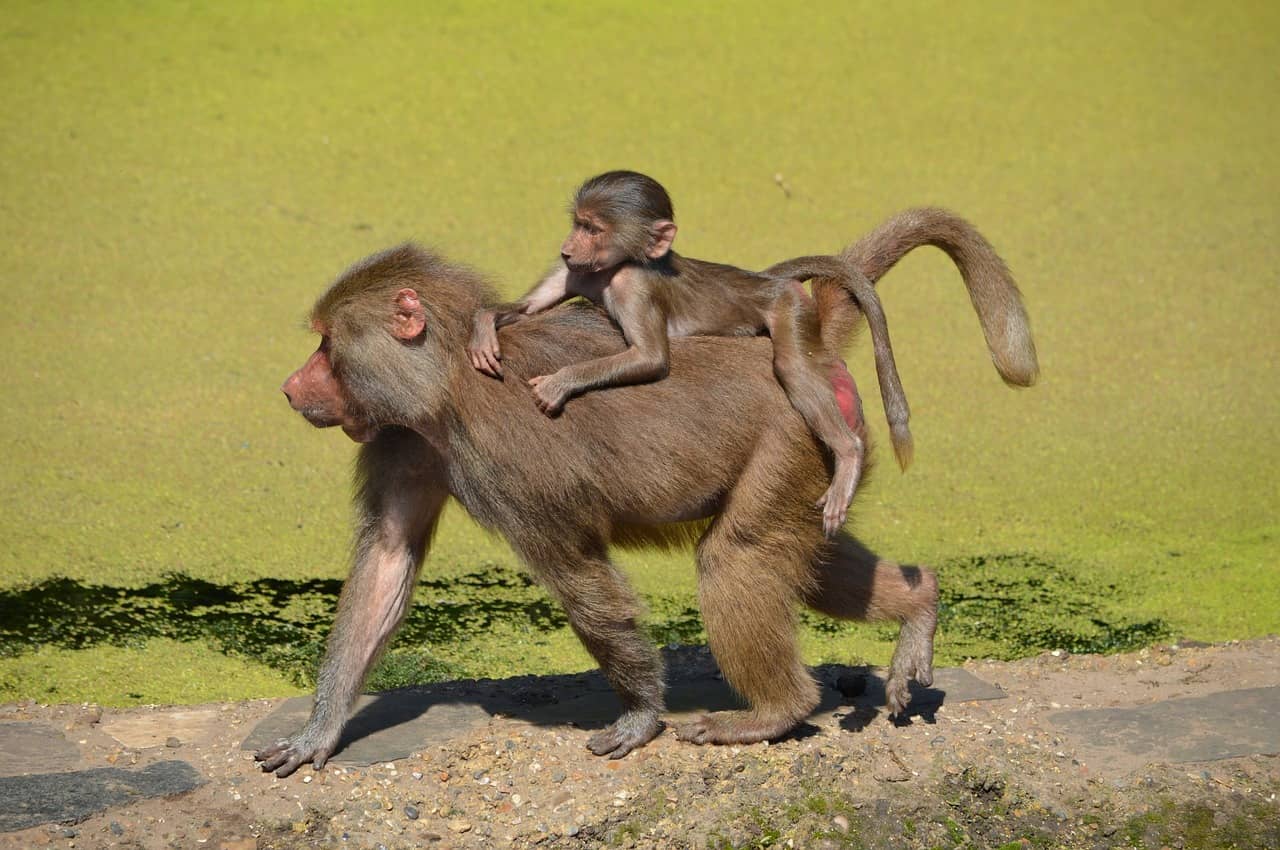 The collective noun for a group of baboons is a "troop"
The collective noun for a group of baboons is a "troop"Home Range Requirements:
- Secure sleeping refuges (cliffs, caves, large trees provide predator protection)
- Adequate food resources
- Reliable water access
Inter-troop Interactions:
- Troops typically avoid each other when home ranges overlap
- Encounters trigger dominance displays between adult males (staring, lip-curling, canine exposure)
- Shared areas are used at different times to minimize conflict
Symbiotic Relationships with Other Species
Baboons sometimes travel alongside antelope species, such as impala or nyala. This mutually beneficial arrangement provides:
- No direct food competition
- Shared vigilance against predators
- Strength in numbers
- Multiple sensory advantages (extra eyes and ears for danger detection)
Baboon Reproduction & Mating Behavior
Female baboons can enter estrus at any time of year, signaled by distinctive physical and behavioral changes.
Mating Signals & Strategies:
- Female receptivity indicators: Swollen, bright red skin on the rump, rump presentation, white eyebrow flashing
- Consortship: Females may pair with a single male for several days, foraging and sleeping together
- Mating patterns: Early-cycle promiscuous mating with low-ranking males; late-cycle (highest conception probability) reserved for dominant males
- Parental investment: Males sometimes provide grooming and food to consorting females
Baboon Infants: Development & Parental Care
Infant Care Stages:
- Newborn: Carried clinging to mother's belly
- Young infant: Rides face-down on mother's back
- Older infant: Sits upright on mother's back, using her raised tail as a backrest
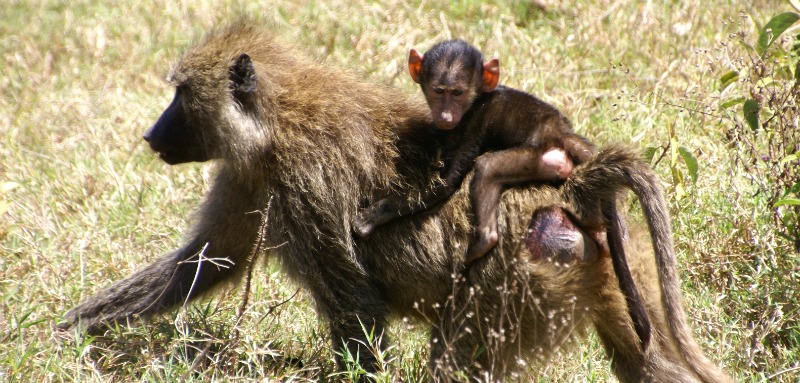 When the baby is old enough to walk, it rides on her back.
When the baby is old enough to walk, it rides on her back.Social Development:
- Infants sometimes hitch rides from other troop members
- High-ranking males often play with and carry infants
- Juveniles display human-like tantrums when denied transport
- Females inherit their mother's social status and remain in their birth troop
- Males emigrate at 7-8 years old, moving between troops for months or years
Daily Life: How Baboons Spend Their Day
Baboons follow predictable daily routines structured around foraging, social interaction, and safety.
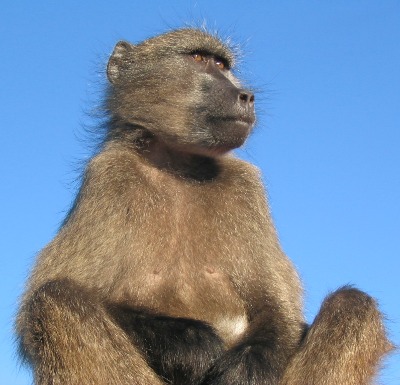 Where do baboons live?
Where do baboons live?The benefits of shared knowledge about their environment, shared vigilance, and strength in numbers against the attacks of predators.
Typical Daily Schedule:
- Dawn: Leave overnight refuge at first light and assemble
- Morning: 3-hour foraging session with social grooming in small groups
- Midday: Rest period (siesta) during hot weather
- Afternoon: Resume foraging while moving toward sleeping sites
- Evening: Extended grooming sessions before retiring
Troop Movement & Organization:
- Travel 5-6 miles daily while foraging
- Dominant males positioned at front and rear
- High-ranking females (likely with infants) occupy the center
- Other adult males guard the flanks, watching for danger
- When alarmed, troops bunch together and flee to cover with specific formations (younger males on flanks, largest males at rear)
Troop Size & Social Benefits
Baboons are intensely social animals living in female-bonded troops ranging from 4 to 100 individuals (average: 40 members).
Advantages of Troop Living:
- Shared environmental knowledge
- Collective vigilance against predators (especially leopards)
- Strength in numbers for defense (groups can even kill leopards)
- Social learning opportunities
Challenges of Group Living:
- Intensified food competition among members
- Strategic response: Forming alliances and friendships to protect food resources
- Clever feeding strategy: Secretly stuffing cheek pouches when finding rich food patches, then relocating to eat undisturbed
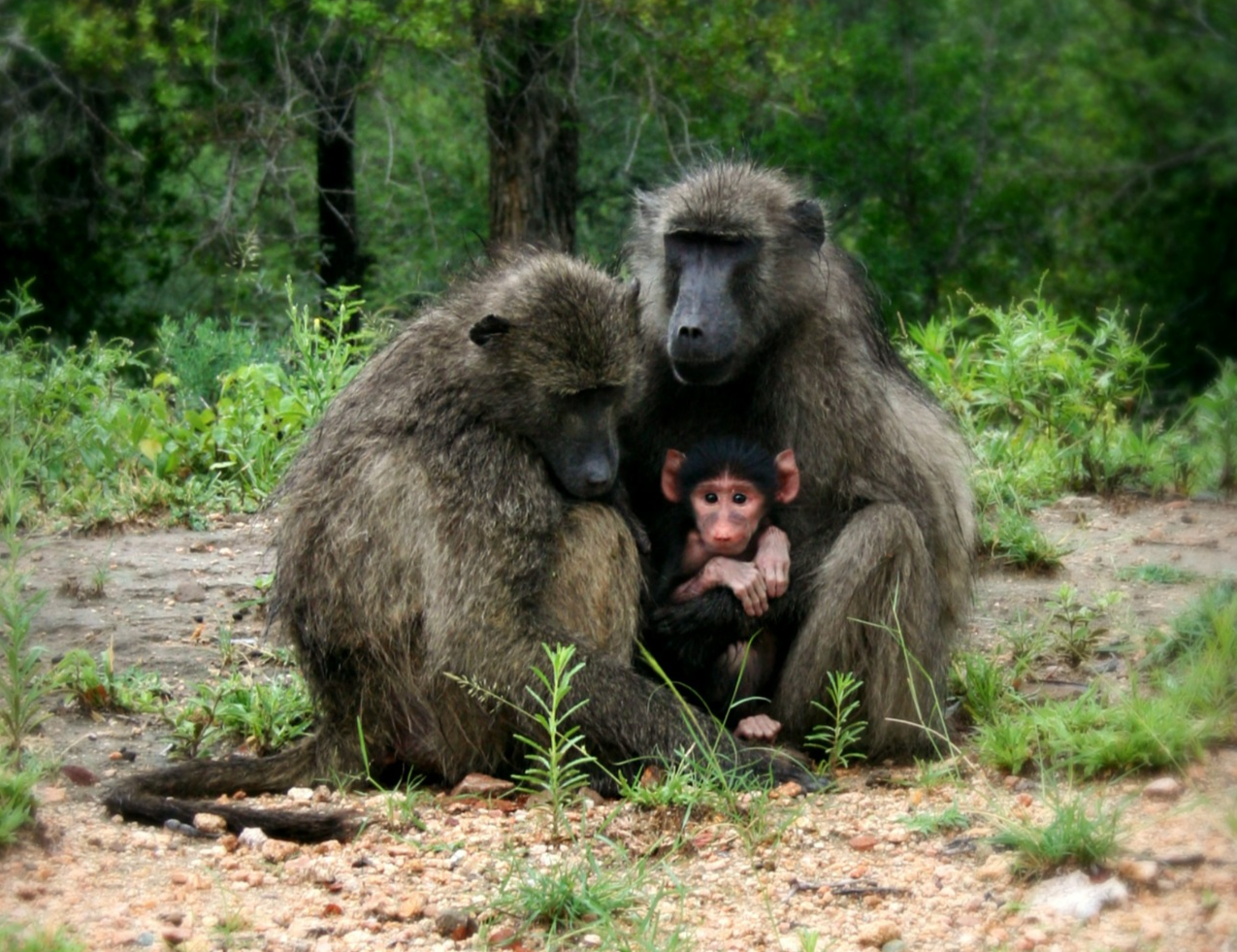
Baboon Lifespan: How Long Do Baboons Live?
- Wild baboons: Up to 30 years
- Captive baboons: Up to 45 years
The significant difference in lifespan reflects the challenges of wild survival, including predation, disease, and resource scarcity.
Frequently Asked Questions About Baboons
Are baboons dangerous to humans?
Baboons can be aggressive, especially when habituated to human presence. They possess powerful jaws and large canine teeth, making them potentially dangerous if threatened or when protecting their troop.
What is the strongest baboon species?
The chacma baboon is the largest and strongest species, with males weighing up to 45 kg (99 lbs) and possessing formidable strength and canine teeth.
How smart are baboons?
Baboons demonstrate remarkable intelligence, including strategic planning, deceptive communication, complex social maneuvering, and advanced problem-solving abilities that rival many great apes.
What are baboons' main predators?
Leopards are the primary predators of baboons, along with lions, hyenas, crocodiles (near water), and large eagles (which target infants).

